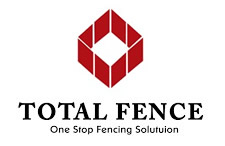Electric Fencing
Electric Fencing is a security barrier that uses electric shocks to deter animals or intruders from crossing the fence. It typically consists of energizers, conductors, insulators, and posts, creating a charged boundary.
Features:
Applications:
Variants with Technical Specifications:
Battery-Powered Electric Fencing
-
- Power Source: Operates on batteries, suitable for remote areas.
- Voltage: Typically ranges from 4,000 to 10,000 volts.
Mains-Powered Electric Fencing
-
- Power Source: Connects to the mains electricity.
- Voltage: Can provide higher voltages, often exceeding 10,000 volts.
Solar Fencing
-
- Power Source: Exclusively solar-powered.
- Solar Panel Capacity: Higher capacity solar panels, often in the range of 20W to 100W
Frequently Asked Questions (FAQs):
Is Electric Fencing safe for humans and animals?
Yes, modern electric fences are designed to provide a deterrent without causing harm.
How do I install and maintain an Electric Fence?
Installation involves setting up posts, insulators, and wires. Regular checks ensure the system is operational.
Can Electric Fencing work during power outages?
Battery-powered systems can continue to function during power outages.
